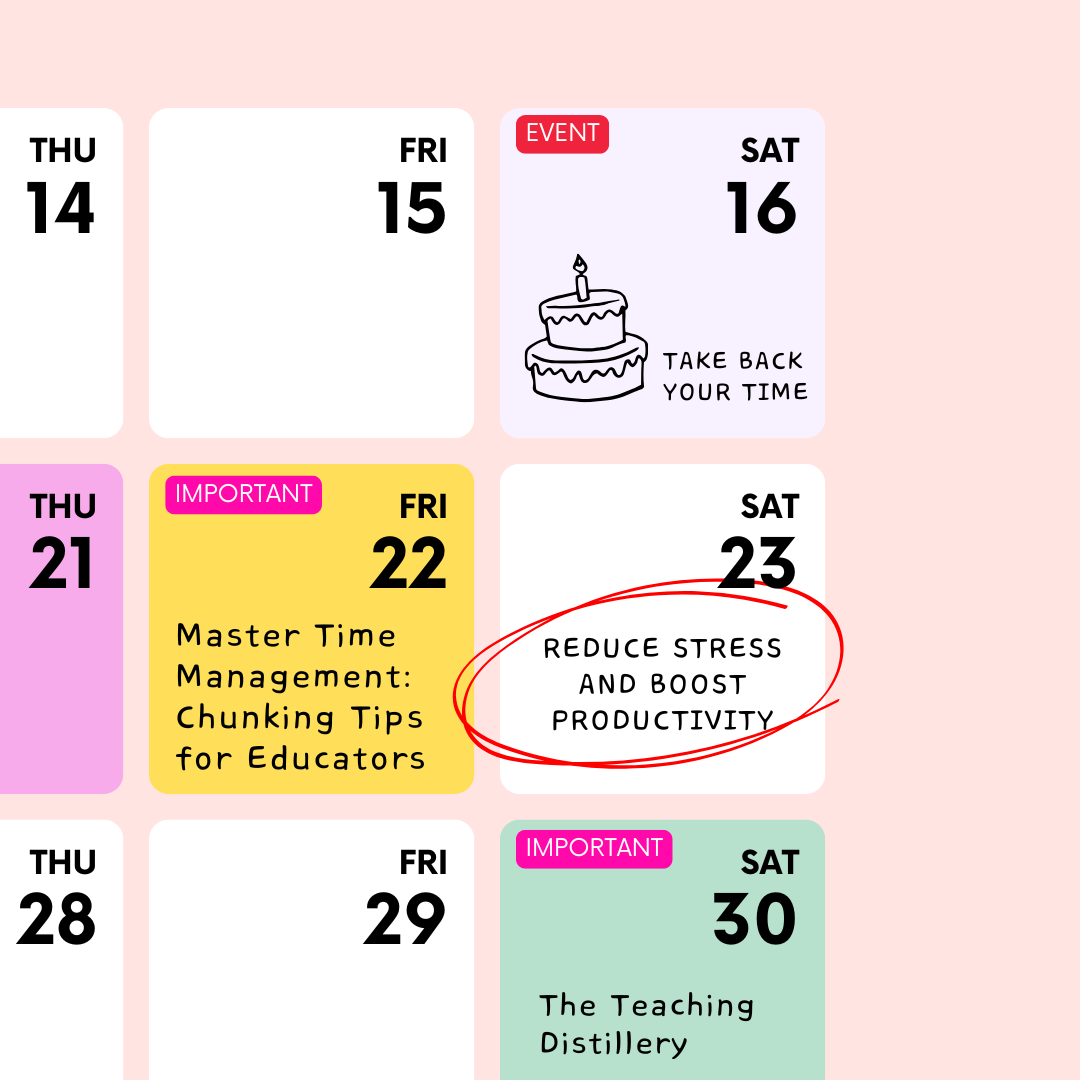Master Time Management: Chunking Tips for Educators to Reduce Stress and Boost Productivity
As educators, the demands of lesson planning, grading, meetings, and personal responsibilities can feel overwhelming. However, with the right organizational strategies, you can take control of your time and maximize your productivity. One effective method is chunking: breaking your day into manageable time blocks and assigning specific tasks to each chunk. This approach helps prioritize what’s important and eliminates the stress of multitasking.
Here’s how you can incorporate chunking into your routine as an educator:
1. Start with a Weekly Overview
Begin by looking at your week as a whole. Map out your commitments, deadlines, and priorities. Identify key periods of free time where you can focus on specific tasks. For example, Friday evenings might be perfect for planning next week’s lessons, while Saturday mornings could be reserved for personal errands or hobbies.
2. Break Your Day Into Time Chunks
Divide each day into chunks that align with your natural energy levels and daily rhythms. For instance:
Morning (before school): Prepare materials, answer urgent emails, or enjoy a quiet moment to reflect.
Midday (lunch or prep period): Grade a small set of assignments or review lesson plans.
Afternoon (after school): Meet with colleagues or organize your classroom.
Evening: Focus on personal time, such as exercise, reading, or spending time with family.
Assign tasks to each chunk based on their priority and complexity. Aim to tackle the most mentally demanding tasks during your peak energy hours.
3. Be Specific with Your Tasks
Avoid vague goals like “work on lesson plans.” Instead, break them into actionable steps, such as “create slides for Monday’s science lesson” or “write three discussion questions for Tuesday’s literature class.” This specificity ensures that each time chunk is used efficiently.
4. Use Visual Tools to Plan
Visual aids can help you stay on track. Use a planner, calendar, or digital tool to block out your chunks. Color-coding tasks by category—work, personal, and family—can make your schedule easier to follow. Apps like Google Calendar, Google Keep, or Fig Jam (our favorite) can be excellent for tracking and adjusting your plans.
5. Prioritize Breaks
Chunking isn’t just about work—it’s also about intentional rest. Schedule regular breaks to recharge. Even five minutes of stretching or deep breathing can boost your energy and focus. Consider adopting a "work for 50 minutes, rest for 10" rhythm during intensive tasks.
6. Plan for Unstructured Time
Life as an educator is unpredictable, and unexpected tasks will arise. Build flexibility into your schedule by leaving a chunk or two open for catch-up or unscheduled needs. This buffer time can prevent small disruptions from derailing your day.
7. Reflect and Adjust Weekly
At the end of each week, reflect on what worked and what didn’t. Did certain chunks feel too short for the tasks assigned? Were you overly ambitious in your planning? Use these insights to refine your approach for the following week.
Sample Weekend Chunking Plan
Here’s an example of how an educator might organize their weekend using the chunking method:
Friday Evening: Relax and unwind with an activity you enjoy, like watching a favorite show or taking a walk.
Saturday Morning: Focus on personal hobbies or interests, such as gardening, crafting, or exercising.
Saturday Afternoon: Spend time with family or friends, run errands, or engage in self-care.
Saturday Evening: Enjoy a leisurely meal or a calming activity like reading or journaling.
Sunday Morning: Plan and prepare for your personal week ahead (e.g., meal prep, organizing your home).
Sunday Afternoon: Pursue a creative project or take time for outdoor activities.
Sunday Evening: Set intentions for the week and wind down with relaxation techniques, like meditation or gentle stretching.
TL;DR
Chunking empowers you to take control of your time and focus on what truly matters. By breaking your day into manageable pieces and assigning intentional tasks to each, you’ll reduce stress, increase productivity, and create a more balanced life.
Try chunking this week and see how it transforms your routine. Remember, the goal isn’t perfection—it’s progress!

